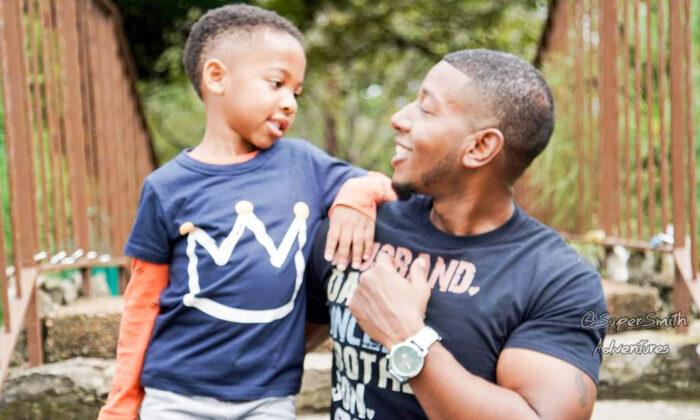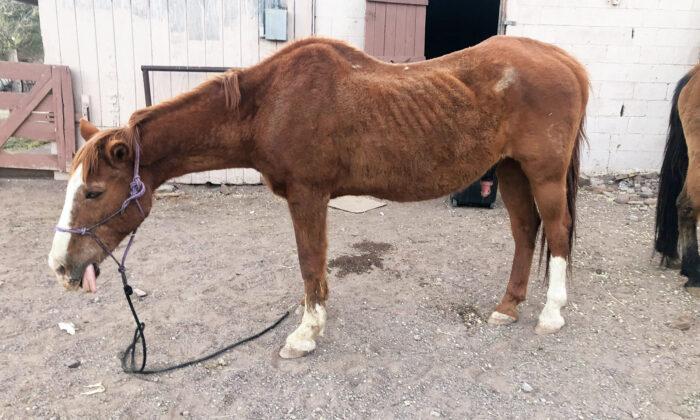How to help your kids avoid meltdowns and tantrums when they’re out in public? TikTokker and parenting advocate Jackie Santillan, 40, shares the H.O.W. method—a simple way for parents to help prepare their children when they’re outside.
The H.O.W. method is a simpler, modified version of the CHAMPs (Conversation, Help, Activity, Movement, and Participation) method, which is well known and used by teachers as a positive approach to behavior management.
“The whole method is to help your kids know what to expect before you do something,” Santillan told The Epoch Times, referring to the H.O.W method. The former teacher of 11 years advocates telling your children in advance how you expect them to behave in public.
Sharing more about the method, Santillan shared that the first letter, “H,” stands for “help.” In other words, communicate how you expect your child to get your attention. Whether by eye contact, saying “mommy,” tapping you on the shoulder, or saying “excuse me,” you let your child know how you expect them to get your attention for help when they need you.
The second letter, “O,” stands for “output” or “volume,” as in a circular volume knob. How loud should your child be in the place when you are out in public? Tell them whether they should use a low, medium, or high volume voice.
Lastly, the third letter, “W,” stands for “what” your child should be doing with their body. Should they be walking next to you? Sitting in their seat or should they be holding your hand? Are they allowed to touch anything in the room? Should they be walking or running? Tell them ahead of time.
The key to the H.O.W. method is specificity; communicating with your child so that there is no question in their mind about what you expect of them in each situation, especially when they are out in public. This type of communication can be helpful at home, on errands, and in the classroom alike—allowing the child to be at rest in his or her mind, aware of expectations and boundaries.
“You know, when you know what to expect, you feel safer and you’re able to learn because you get out of that worrying part of your brain in the temporal lobe, and into your prefrontal cortex, which is where you feel safe to learn,” Santillan said.
Santillan, who is mother to Maximus, uses this method in the grocery store all the time. She takes the time to talk to him before they go inside so that he knows whether he should be sitting in the cart or walking alongside her at arm’s length. Before Max enters the store, he already knows that he can choose one thing, saving Santillan from drawn-out battles based on the whims or wants of a 3.5-year-old.

“As long as I tell him what’s going to happen, he’s so much better behaved,” she said.
Santillan’s effort to train her son hasn’t gone unnoticed. She said that people often compliment her on his behavior at the grocery store.
However, it goes without saying that the method doesn’t work every time, especially when parents forget to communicate; every situation seems to be different, and Santillan has been there too.
Recently, Santillan struggled to manage Max’s first swimming lesson tantrum, which resulted from fear, hurry, and lack of preparation.
“I didn’t tell him what to expect. When we got there, I just said, ‘Come on, what’s going on? We got to get ready to get five minutes before swim class starts,’ and then he had a meltdown,” she said. “When we went inside, he wouldn’t let me put his bathing suit on.”
She also stressed that, even when parents do take the time to communicate clearly in advance, the myriad situations, characters, and circumstances in life can render the H.O.W. method ineffective at times.
So sometimes when her son doesn’t remember what is expected of him in public and has a meltdown, she takes him to a private place, where people aren’t watching him, to remind him.
“Because having people watching is hard for him,” she said. “But it’s also hard for me because I feel like all the other parents are judging me.”
This is a common sentiment perhaps felt by many parents when the amalgam of a child’s misbehavior and the fishbowl of a public setting pressure-cook together. It can challenge a parent’s resolve and perhaps alter one’s boiling point.
Santillan, who is grateful for the training she garnered as a teacher, shares another helpful method for parents in these trying situations: the BREATH method. The BREATH method reminds the parent or teacher to breathe and remain calm in order to address any situation with a child. Then, to recognize what is really going on with the child and the cause of their misbehavior.
While acronyms and methods are helpful tools to have in one’s pocket, Santillan reminds us that a parent’s example is far more valuable. Even at a young age, when a child is too young to understand a parent’s expectations from the conversation, they can see the parent’s pattern. They watch how a parent responds to difficult situations and maintains control (or doesn’t). Children are likely to repeat what they see from their parents’ model.
“So we have to try to set a good example so that they can see a good example,” she said.

When asked if she has any other advice for parents, Santillian said, “try to strengthen your relationship and your connection with your child.” Kids want to do good for you when they care about you and they know that you care about them, she explained.
So if a parent and child have been butting heads for a while, she suggests doing something fun.
Sometimes, parents need to stop and rebuild trust—paying attention to the child, acknowledging them, and spending time with them to demonstrate that they care.
“Remember that your child is a person. They’re not yours to control, necessarily. They’re yours to teach and to guide and to help,“ she said. ”But ultimately, you can’t make them do anything. So, you know, if you want them to succeed in life, try to pass on the most helpful skills and just love them; and let them know that they’re loved and that they have you to count on if they need it.”





